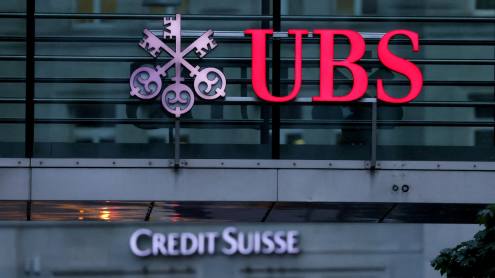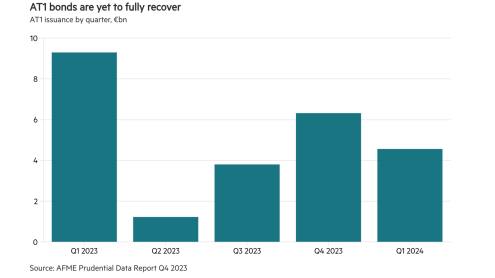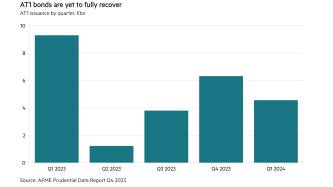Telefonica is one of the largest telecoms companies in the world, operating in 25 countries with a strong presence in Latin America and other fast-growing emerging markets. The group derives just 30% of its revenues from Spain but is headquartered in Madrid. As such, it is one of the country’s largest companies and is synonymous with Spanish commercial enterprise.
Not surprisingly, with Spain’s economic woes deepening, Telefonica’s standing in the financial markets has suffered. With a credit rating of Baa2 and BBB with negative outlook, the company has to pay significantly more than other international telecoms groups to borrow in the credit markets. Two or three years ago, for example, France Telecom, Deutsche Telekom, Vodafone and Telefonica were treated more or less equally by investors. Now they are not.
“There used to be 20 to 30 basis points [bps] difference in spread levels. Now there is a difference of about 300bps,” says one telecoms banker.
Nonetheless, Telefonica is keen to maintain a regular presence in the bond markets and, in September 2012, became the first Spanish corporation in six months to launch an issue.
Good timing
The timing was no coincidence. Spain’s troubles had effectively closed the market for Spanish issuers throughout the first half of 2012. By the first week of September, however, it was becoming clear that European Central Bank president Mario Draghi was prepared to take serious action to keep peripheral European countries in the eurozone. The spreads on Spanish bonds tightened significantly in the secondary market and Telefonica decided to move.
“We had no urgent need for the money but we continuously monitor the markets and in early September they seemed to be in good shape and investor appetite was strong,” says Daniel Rodríguez-Malo, credit market relationship director at Telefonica.
Consulting with bookrunners Barclays, Banca IMI, BBVA, Bank of America-Merrill Lynch and Mediobanca, an agreement was reached on amount, pricing and maturity. Telefonica maintains close contact with the market and receives daily guidance on pricing so it can move extremely fast when it decides to act.
“When we feel the time is right, the process is quite quick – just a couple of days,” says Mr Rodríguez-Malo.
So, at 9.30am on September 5, Telefonica issued a €750m five-year deal. The launch date was bold, occurring a day before Mr Draghi unveiled his plan to buy the bonds of distressed eurozone countries in unlimited quantities.
Nonetheless, the group was confident that its transaction would be well received. Although forced to pay a premium to other European telecoms issuers, Telefonica is still relatively well-regarded by the institutional investment community, at least when compared with many Spanish corporations. Just how well regarded became clear on the morning of September 5.
“The transaction was announced at 9.30am and within an hour the book had grown to more than €5bn,” says Mr Rodríguez-Malo.
Investor enthusiasm
Initial pricing guidance was relatively generous, at 510bps over mid-swaps, compared with secondary market spreads of 465bps and 470bps on similar issues. But, given investor enthusiasm, the pricing was swiftly revised down to mid-swaps plus 490bps to 500bps. Even so, the orders kept coming. Almost 500 institutions applied for bonds and 20 orders were higher than €50m each. Such was the appetite that the largest five orders applied for more than €800m of bonds. Reflecting demand, the final pricing was mid-swaps plus 485bps, giving a new issue premium of just 25bps
“By the time the books closed, the deal was almost 10 times oversubscribed,” says Mr Rodríguez-Malo. “It was the strongest price talk compression seen in the investment grade corporate market since the beginning of the year and it really highlighted the depth of support for the deal.”
Institutional involvement was widespread across Europe, although UK investors showed the keenest interest and took 28% of the transaction. Spanish investors accounted for just 11% of the book with Germany taking 19% of the bonds, France 17%, Italy 8% and the remaining 17% coming from Switzerland and the rest of the world. Given the reception to the deal, Barclays advised Telefonica to launch a tap issue, raising a further €250m.
“It was incredible. We raised €800m within a couple of minutes and the book closed in half an hour,” says Mr Rodríguez-Malo.
Recognised value
Some of the institutions had already bought into the €750m transaction, but many were new investors, who had been reluctant initially but were now keen to participate. “For us, the response underlines that investors can see Telefonica as a good credit and they recognise the value in this transaction,” says Mr Rodríguez-Malo.
The timing was also interesting. The following week, several Spanish credits came to market, once Mr Draghi had spoken. Telefonica took a risk in coming early. But it paid off handsomely.
“We were extremely pleased with the transaction. Our intention is to build long-term relationships with investors and this issue was very helpful in this regard,” says Mr Rodríguez-Malo.












